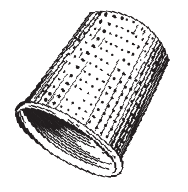One jar contained a conch-shaped mass
the color of clay after firing, a fist-sized chunk
wedged beside a pouch of pinkish-white
strings, like bloated dental floss.
Another held fragments of luminous,
rectangular tissue roughly the size
of granola bars. The pathologist on duty
at Princeton Hospital the day that Einstein died
stole the contents of his celebrated cranium,
and for most of his professional life,
Thomas Harvey diligently sliced,
photographed and studied the brain,
hoping to find some key behind
E = mc2—some prefrontal, occipital reason
for Einstein’s extraordinary skills.
When he found no markers, he ferried
slivers of Einstein across the country
to an august body of peers, hoping
for a discovery. No one found anything
remotely odd with Einstein’s brain.
Twenty-five years, and nothing to show for it. Eventually,
Harvey’s obsession cost him
his job, his marriage, his career at Princeton.
He kept the brain in a cooler in his lab,
tucked behind a box labeled Costa Cider.
Should someone stop by to seek a memento,
Harvey would casually plop the brain
on a wooden cheese board, shave off a piece
then shove what was left of it back in its jar.
Why covet the brain of that mild-mannered genius
only to give random pieces away?
Harvey gradually got rid of the organ,
perhaps because his dogged interest
and fixation turned into wasted years,
and the source of Einstein’s brilliance
passed over him like the shadow of a condor.
As for the brain that worked out theories
of relativity, fission, the law of photoelectric effect,
quantum mechanics, Avogadro’s number, the size
of molecules, dual nature of quanta and why
the sky is blue—it survives as shavings
between glass slides carefully placed
in keepsake boxes in cartons brimming,
in bare-beamed, cobwebbed attics.


